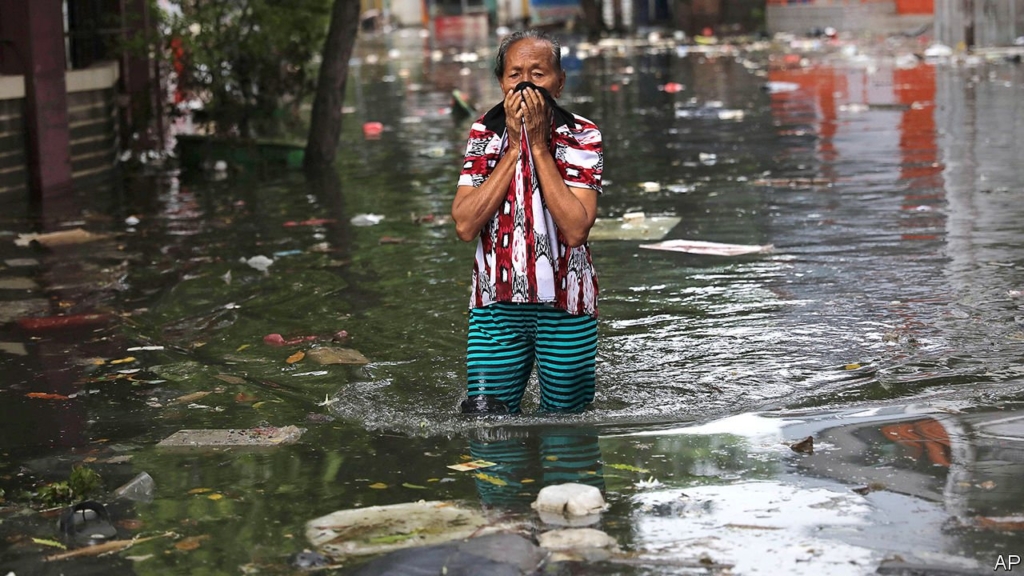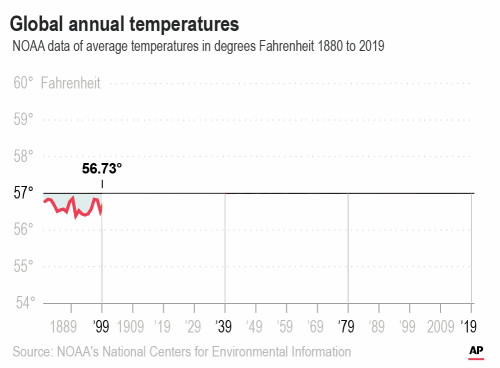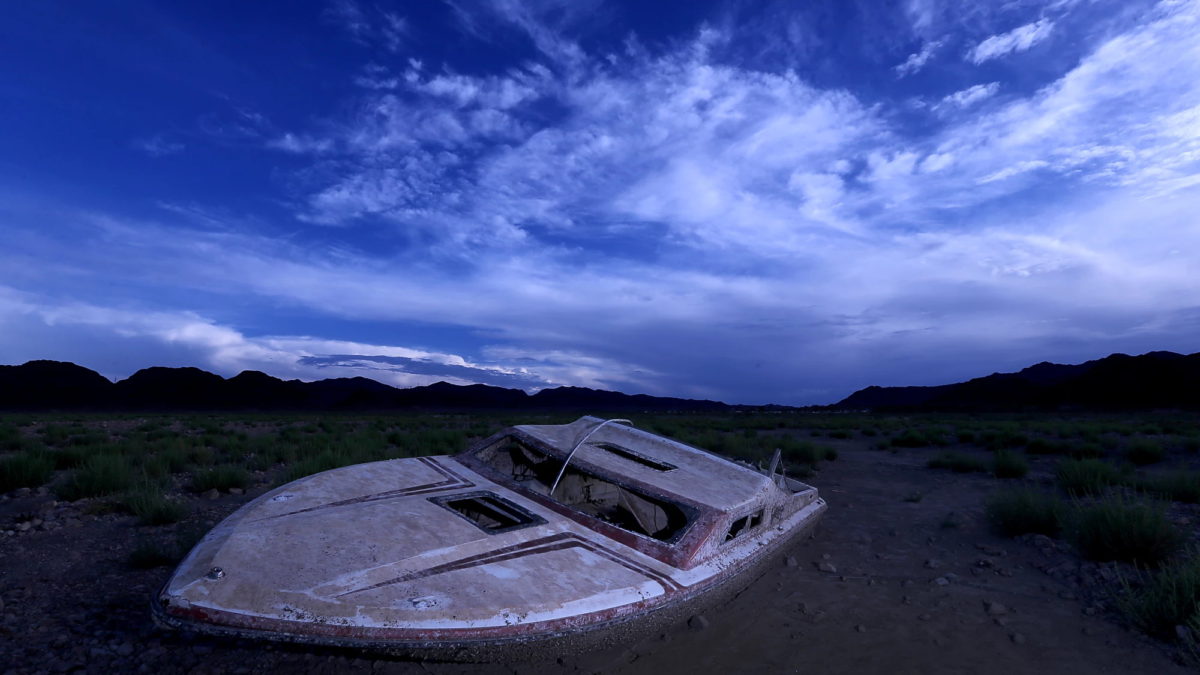Flooding in Jakarta is the worst for over a decade, more rainfall expected – “It was like the end of the world”
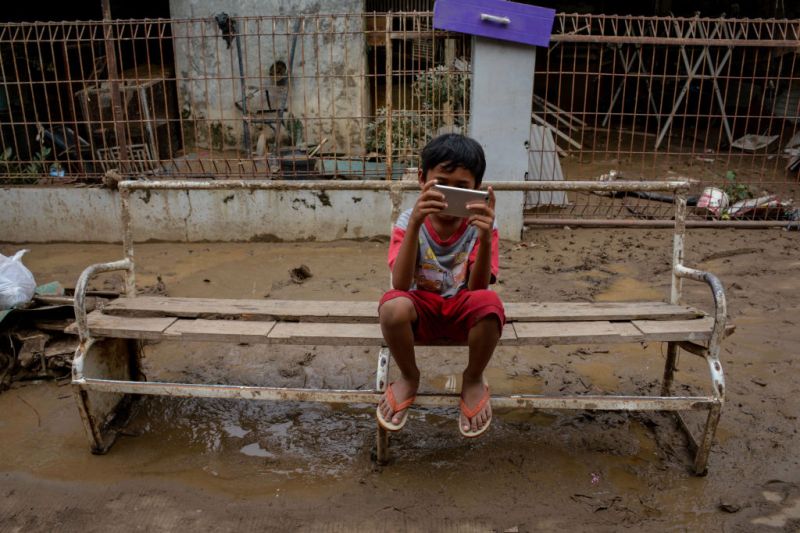
9 January 2020 (The Economist) – “It was like the end of the world,” says Nurhayati, dabbing her eyes with the hem of her hijab. On December 31st swollen clouds emptied over Indonesia’s capital, dumping 377 millimetres of rain in one day. That is the most since records began in 1886, according to the state weather agency. The river near Nurhayati’s home in an eastern suburb of Jakarta burst its banks, overturning vehicles parked alongside. Within hours the water had risen nearly eight metres, engulfing one-storey houses. Nurhayati’s neighbour, Pudji, says she had to wait for 22 hours before she could be rescued from her roof.
Heavy rains overwhelm Jakarta almost every year. But this flood was easily the worst for a decade. It submerged a dozen districts in greater Jakarta, many of which had never previously been inundated, and caused landslides. At least 67 people are dead: some drowned, some died of hypothermia or were electrocuted. Nearly 400,000 people abandoned their homes and sought refuge in shelters.
Problems that have plagued Jakarta for decades exacerbated the disaster. Upgrades to the sewer system have not kept pace with the relentless expansion of the city. Sewers and rivers are often clogged with silt and rubbish.
Limited availability of tap water means that about two-fifths of Jakartans rely on wells. Sucking so much liquid out of the ground is making the whole city sink. Forty percent of it is already below sea level, and some districts are subsiding by 25cm each year. Pumps are supposed to carry floodwaters out of low-lying areas and into Jakarta Bay, explains Leonard Simanjuntak of Greenpeace Indonesia. But last week most of them broke. Why? They were submerged by floodwater, according to an official from the Water Resources Agency.
Climate change compounds all this. Extreme rainstorms will become more frequent and intense as temperatures continue to rise (a warmer atmosphere holds more moisture). Indonesia emits more greenhouse gases than most other countries, primarily because of the way it manages land. Indonesian farmers burn forests to make way for palm oil and other plantations, releasing huge amounts of carbon in the process. Creating tillable land by drying out peat bogs has much the same effect, and makes wildfires more likely. The country is also undertaking a vast programme of electrification that requires the construction of many new coal-fired power stations, the dirtiest kind of generators. [more]
Flooding in Jakarta is the worst for over a decade
66 People Have Died in Indonesia’s Devastating Floods. Here’s What to Know
By Hillary Leung
8 January 2020
(TIME) – The death toll from severe flooding in and around the Indonesian capital of Jakarta has risen to 66 as parts of the country continue to reel from heavy rain that began on New Year’s Eve. Landslides and flash floods have displaced more than 36,000 in Jakarta and the nearby provinces of West Java and Banten, according to the ASEAN Coordinating Centre for Humanitarian Assistance (AHA).
These are the worst floods Indonesia has seen since 2013, when at least 29 people died in the aftermath of torrential rains. The disaster, experts say, underscores the impacts of climate change in a country with a capital city that is sinking so quickly that officials are working to move it to another island. The floods are also threatening to exacerbate the already severe wealth inequality that plagues the Southeast Asian nation.
With more rainfall expected over the coming weeks, here’s what to know about deadly floods in Jakarta. […]

How does climate change fit into the conversation?
Experts say the devastating floods are a reminder that the world’s fourth-most populous country is highly vulnerable to climate change, which many blame for the severe downpours and extreme dryness that comes after a bout of heavy rain.
Certain areas of North Jakarta are sinking by 6 to 10 inches a year, according to the World Bank, and could fall up to 16 feet below sea level by 2025. Excessive extraction of groundwater for daily use is responsible for the fate of the city, which is home to 9.6 million. Indonesia announced last August that it would move its capital to the island of Borneo as overcrowding and pollution in Jakarta worsens.
Sutanudjaja, director of the Jakarta-based Urban Studies Center, criticizes the country’s leaders for inaction. “They know the crisis, but do not address it properly,” she says.
As the flood disaster threatens to persist, environmental groups are calling on leaders to face the challenge at hand and avert similar tragedies in the future.
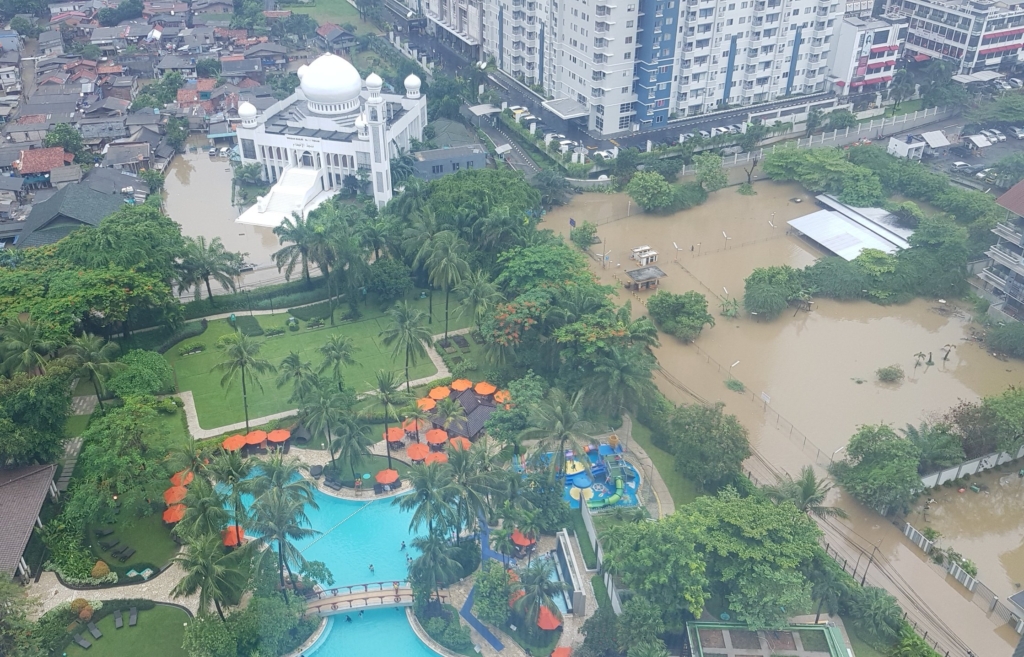
What do the floods say about inequality in Indonesia?
The floods, which have disproportionately affected the poor in Indonesia, have ignited conversation about the nation’s income disparity. Indonesia has the sixth greatest wealth inequality in the world, according to Oxfam. Less developed districts that were badly hit by the floods in and outside Jakarta, where poorer families tend to live, lack access to infrastructure such as decent roads and electricity, the NGO reports. This makes them more susceptible when weather tragedies strike.
A photo on Twitter posted a day after the downpour had many commenting on how the floods laid the country’s inequality bare: the aerial shot shows the pristine swimming pool at Jakarta’s Shangri-la Hotel virtually untouched as the kampong—or village—just adjacent was submerged in muddy floodwaters. [more]
66 People Have Died in Indonesia’s Devastating Floods. Here’s What to Know
